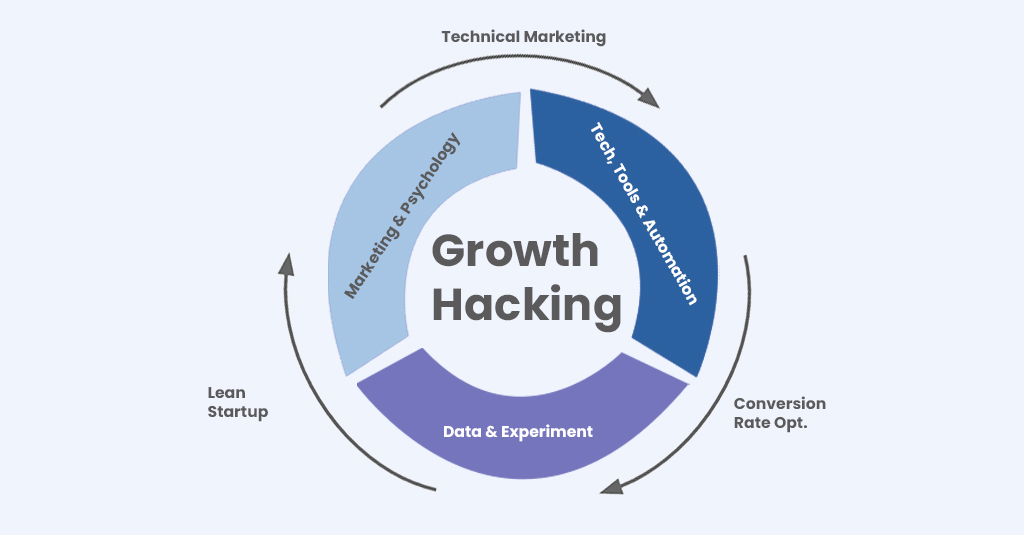
As the technology industry continues to evolve at a rapid pace, growth hacking has emerged as a critical component for success. Companies that prioritize growth hacking have the potential to outpace competitors, quickly acquire new customers, and generate revenue. In this article, we will explore 40 top growth hacking strategies for technology businesses that can drive fast and measurable growth.
Understanding Growth Hacking in the Tech Industry
Growth hacking is a marketing approach that has become increasingly popular in the tech industry. It is a data-driven and iterative process that focuses on rapid experimentation and continuous improvement to achieve fast and scalable growth. By leveraging innovative techniques and unconventional strategies, growth hacking enables businesses to achieve explosive growth in a short period of time.
However, it is important to note that growth hacking is not a one-size-fits-all solution. Different businesses may require different approaches, and what works for one company may not work for another.
The Importance of Growth Hacking for Tech Companies
Growth hacking is essential for technology companies that want to succeed in a highly competitive industry. It enables businesses to grow quickly, increase customer retention, and create sustainable revenue streams. By adopting growth hacking principles, tech companies can stay ahead of the curve and create a loyal customer base that will help them to scale their operations.
One of the key benefits of growth hacking is that it allows companies to achieve growth without relying on traditional marketing methods, which can be expensive and time-consuming. Instead, growth hacking focuses on utilizing creative and often unconventional strategies to achieve growth.
Key Principles of Growth Hacking
There are several key principles that underpin successful growth hacking strategies. These include:
- Rapid experimentation: Growth hacking is all about testing and iterating quickly. By experimenting with different strategies and tactics, businesses can identify what works and what doesn’t, and make adjustments accordingly.
- Data-driven decision making: Growth hacking is heavily reliant on data. By analyzing user behavior and other metrics, businesses can make informed decisions about which strategies to pursue.
- Focus on user acquisition and retention: Growth hacking is all about acquiring new users and retaining existing ones. By focusing on both acquisition and retention, businesses can create a sustainable customer base that will help them to grow over time.
- Continuous improvement and iteration: Growth hacking is an iterative process. By continually testing and improving strategies, businesses can achieve sustained growth over time.
- Utilization of unconventional marketing techniques: Growth hacking often involves utilizing creative and unconventional marketing techniques, such as viral marketing, referral marketing, and influencer marketing.
How Growth Hacking Differs from Traditional Marketing
Growth hacking is distinct from traditional marketing in its approach and focus. Whereas traditional marketing relies on broadcast-style messaging and a broad appeal, growth hacking focuses on targeted messaging and personalized outreach. It is driven by data, and emphasis is placed on experimentation and iteration. Rather than being solely focused on acquiring new customers, growth hacking aims to create loyal customers who remain engaged with a product or service over a long period of time.
In conclusion, growth hacking is a powerful marketing approach that is particularly well-suited to the tech industry. By adopting growth hacking principles, businesses can achieve rapid and scalable growth, while also creating a loyal customer base that will help them to sustain that growth over time.
Building a Solid Foundation for Growth
Before adopting growth hacking strategies, it’s essential to lay a strong foundation for growth. This involves several key steps:
Identifying Your Target Audience

The first step is to identify your target audience. This involves creating a detailed profile of your ideal customer, including demographics, interests, and pain points. By understanding your target audience, you can tailor your messaging and outreach to their specific needs and preferences.
For example, if your target audience is millennials who are environmentally conscious, you may want to highlight the eco-friendliness of your product or service in your messaging. You may also want to use social media platforms that are popular among millennials, such as Instagram and TikTok, to reach your target audience.
Defining Your Value Proposition
The next step is to define your value proposition. Your value proposition is the unique benefit that your product or service offers to customers. This can be framed in terms of the problems that it solves or the value that it provides. Your value proposition should be clear, concise, and compelling.
For example, if you offer a meal delivery service, your value proposition may be that you provide healthy, delicious meals that are convenient for busy professionals. You may also highlight the fact that your meals are made with locally sourced, organic ingredients to appeal to customers who prioritize sustainability.
Setting Measurable Goals and KPIs
To track your progress and measure success, it’s important to set measurable goals and KPIs. These should be specific, measurable, and aligned with your overall business objectives. Examples of KPIs include website traffic, user engagement, and customer acquisition cost.
For example, if your goal is to increase website traffic, you may set a KPI of increasing organic search traffic by 20% in the next quarter. To achieve this goal, you may invest in SEO optimization or create high-quality content that is optimized for search engines.
By following these steps and laying a solid foundation for growth, you can set yourself up for success when implementing growth hacking strategies.
Product Development Strategies
Once you have laid a strong foundation for growth, it’s time to focus on product development strategies. The following tactics can help to drive user engagement, retention, and revenue:
Prioritizing User Experience and Design
User experience and visual design are critical factors in a product’s success. By prioritizing these elements, you can create a product that is easy to use, aesthetically pleasing, and memorable. This can lead to increased user engagement, retention, and brand loyalty.
Implementing Continuous Improvement and Iteration

Continuous improvement and iteration are essential in product development. By gathering user feedback and data, you can identify areas for improvement and make iterative changes to your product. This can lead to increased user engagement, satisfaction, and retention over time.
Encouraging User Feedback and Involvement
User feedback is a valuable source of information in product development. By encouraging user feedback and involvement, you can gain valuable insights into user preferences, pain points, and needs. This can inform product development decisions and lead to a product that meets the needs of your target audience.
Acquisition Techniques for Rapid Growth
Finally, to achieve rapid growth, it’s crucial to focus on user acquisition techniques. The following strategies can help to drive fast and measurable growth:
Leveraging Social Media Platforms
Social media platforms such as Facebook, Twitter, and Instagram can be powerful tools for user acquisition and engagement. By creating targeted ad campaigns, engaging with users, and posting relevant content, you can attract and retain a large user base over time.
Utilizing Content Marketing and SEO
Content marketing and SEO can be powerful tools for driving traffic and user acquisition. By creating high-quality content that addresses user needs and pain points, you can increase your website’s visibility and attract new users. Utilizing SEO best practices, such as keyword research and link building, can further amplify your reach and visibility.
Exploring Influencer Marketing and Partnerships
Influencer marketing and partnerships can be effective strategies for driving user acquisition and engagement. By partnering with influencers or other businesses, you can leverage their existing user base and tap into new markets. This can lead to increased brand awareness, user engagement, and revenue over time.
Conclusion
In conclusion, growth hacking is an essential practice for any technology business that wants to achieve rapid and scalable growth. By adopting the principles of growth hacking and implementing the strategies outlined in this article, you can create a loyal user base, increase customer retention, and generate consistent revenue over time.
